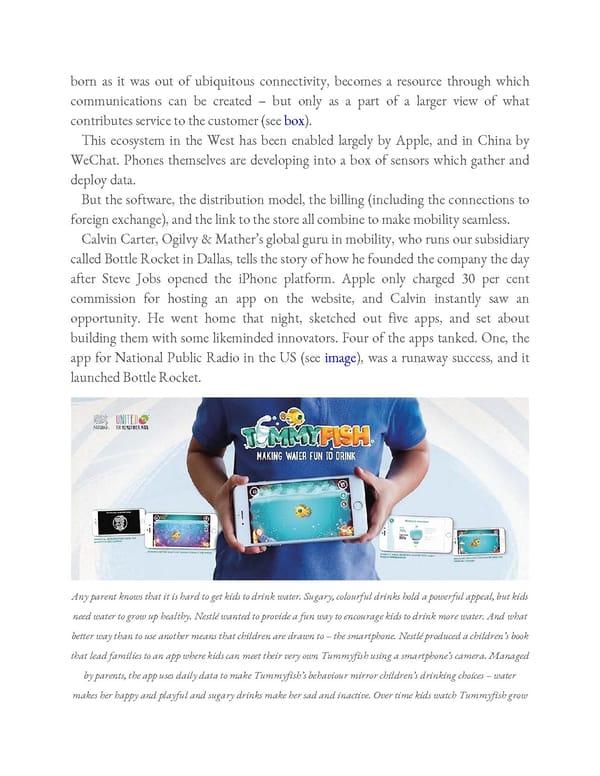born as it was out of ubiquitous connectivity, becomes a resource through which communications can be created – but only as a part of a larger view of what contributes service to the customer (see box). This ecosystem in the West has been enabled largely by Apple, and in China by WeChat. Phones themselves are developing into a box of sensors which gather and deploy data. But the software, the distribution model, the billing (including the connections to foreign exchange), and the link to the store all combine to make mobility seamless. Calvin Carter, Ogilvy & Mather’s global guru in mobility, who runs our subsidiary called Bottle Rocket in Dallas, tells the story of how he founded the company the day after Steve Jobs opened the iPhone platform. Apple only charged 30 per cent commission for hosting an app on the website, and Calvin instantly saw an opportunity. He went home that night, sketched out five apps, and set about building them with some likeminded innovators. Four of the apps tanked. One, the app for National Public Radio in the US (see image), was a runaway success, and it launched Bottle Rocket. Any parent knows that it is hard to get kids to drink water. Sugary, colourful drinks hold a powerful appeal, but kids need water to grow up healthy. Nestlé wanted to provide a fun way to encourage kids to drink more water. And what better way than to use another means that children are drawn to – the smartphone. Nestlé produced a children’s book that lead families to an app where kids can meet their very own Tummyfish using a smartphone’s camera. Managed by parents, the app uses daily data to make Tummyfish’s behaviour mirror children’s drinking choices – water makes her happy and playful and sugary drinks make her sad and inactive. Over time kids watch Tummyfish grow
 Ogilvy on Advertising in the Digital Age Page 298 Page 300
Ogilvy on Advertising in the Digital Age Page 298 Page 300